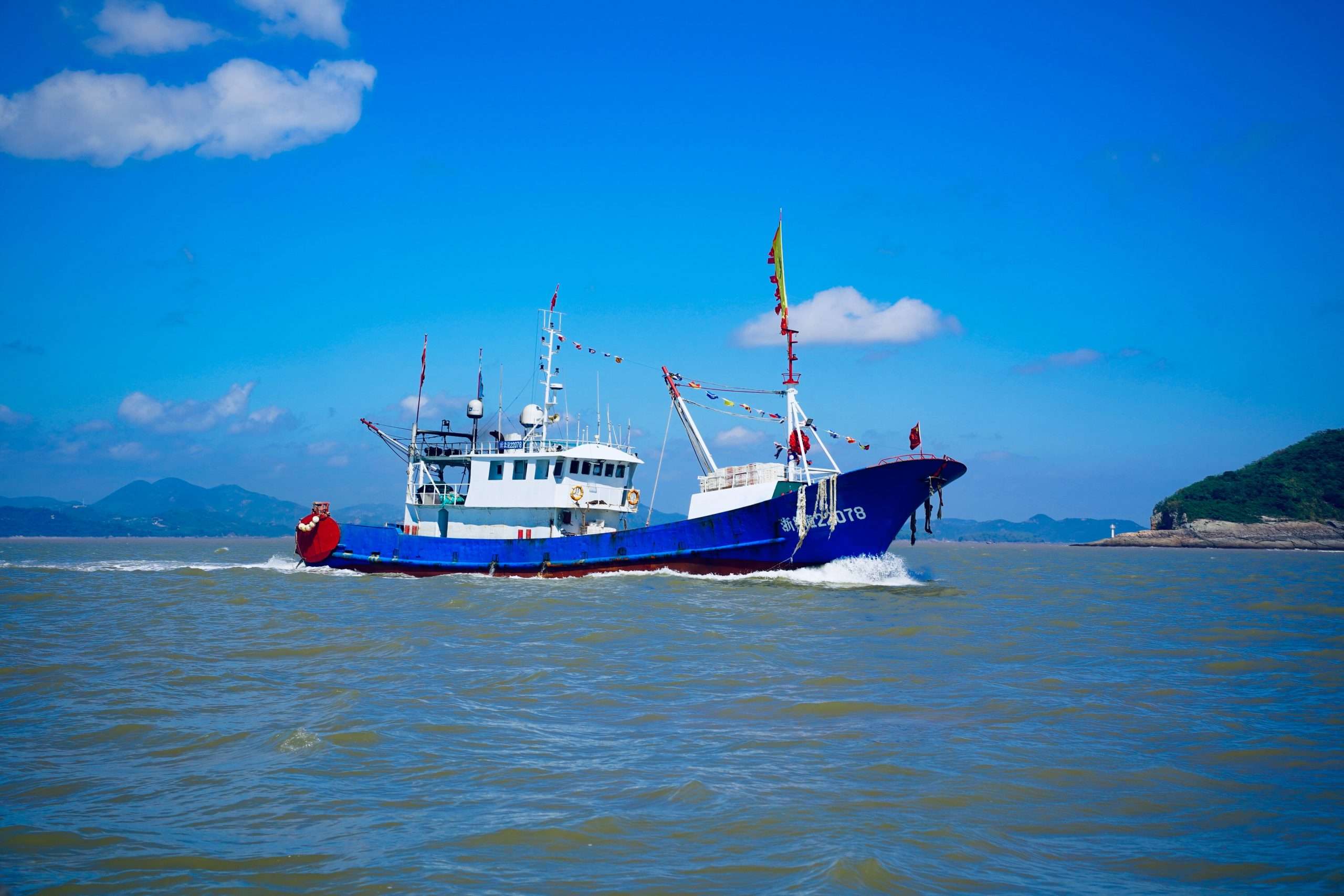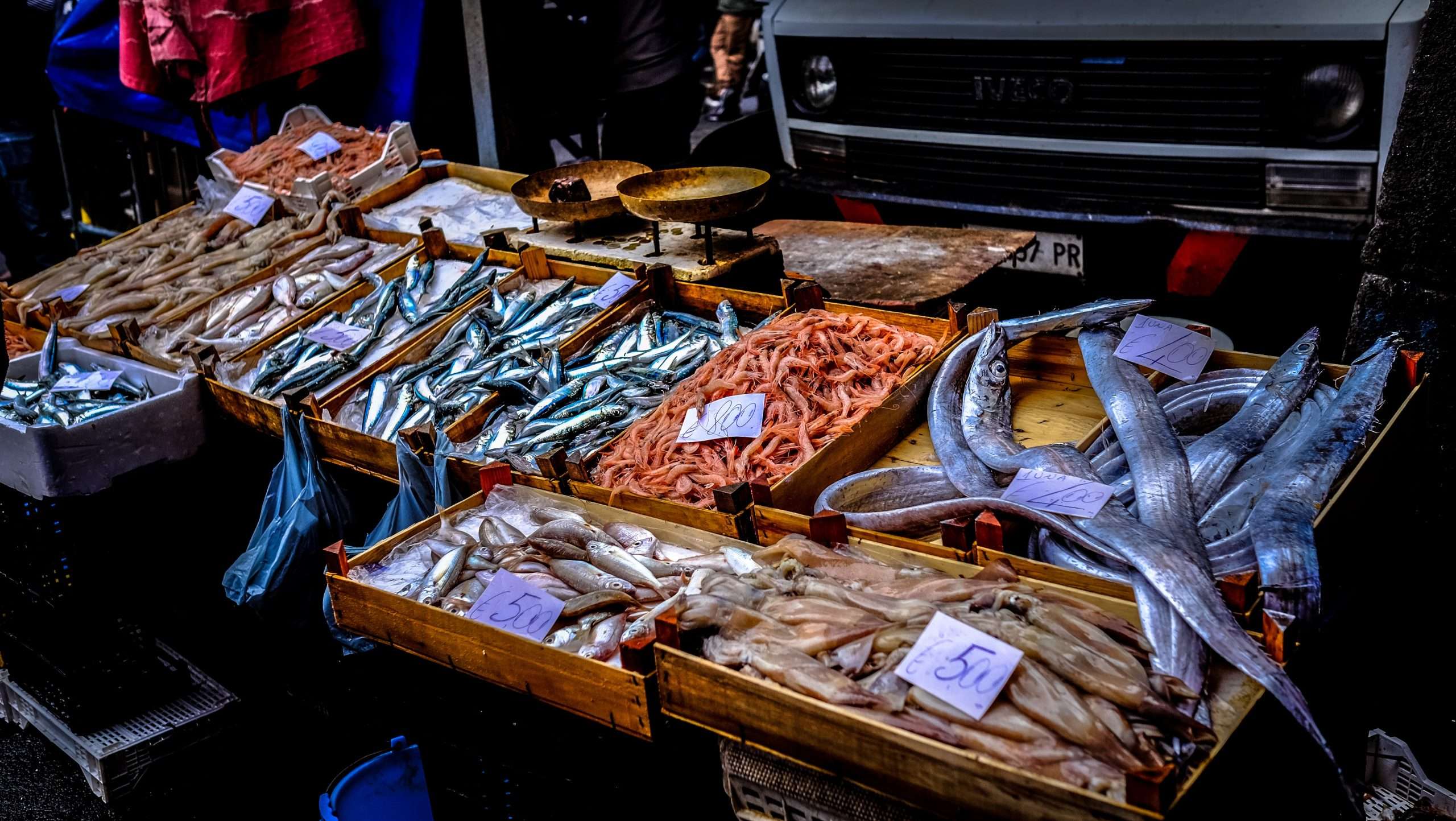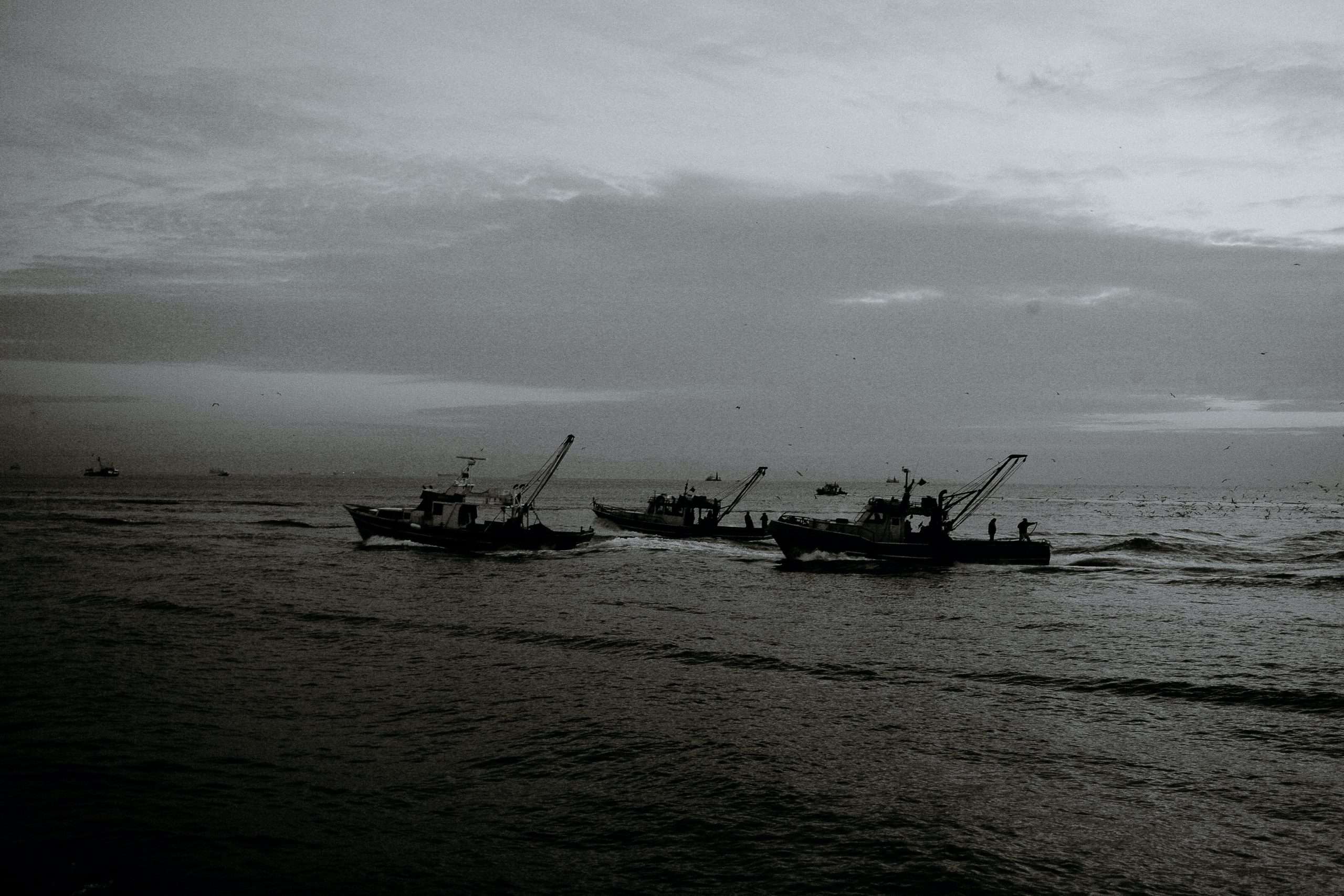There has been more and more focus on the fishing industry in recent years, as concerns about marine life and the ocean grow. The ocean is absolutely critical to the proper functioning of the planet’s climate. It affects every other ecosystem and has huge implications for human well-being. Environmental and humanitarian issues including plastic pollution, protecting endangered marine life, conserving public health and ending human slavery all link directly to ocean governance. Sustainable business models are increasingly central to the conversation.
Some important voices are arguing for an end to fishing altogether. Popular documentaries show the wreckage that fishing, and in particular trawling, creates, and advocates for eating alternative proteins. Other activists have also highlighted the devastating environmental impacts of the seafood industry. These impacts include those related to animal welfare, public health, biosphere integrity, and human abuse. The presence of human slavery within the global seafood industry is an indictment broadly of how the seafood industry operates.
Many communities that subsist on seafood become significantly affected by changes in the seafood industry. Some organisations within the seafood industry purport to employ sustainable business model practices, such as ensuring a green supply chain. How effective are these practices really? Do they really address the impacts of the seafood industry on the environment? And how should we compare sustainable business models in the seafood industry to other industries needing sustainability measures?

Source: Pexels.com
The Impacts of The Seafood Industry
The seafood industry has an extremely negative impact on the ocean and in particular biosphere integrity. International fishing fleets and fishing vessels from China, South Korea and Japan create particular destruction. One recent study demonstrates that as much as 75-86% of the buoyant ocean debris found in the Great Pacific Garbage Patch is discarded fishing gear from vessels in one of these countries (Lebreton, et al., 2022).
Ocean trawlers have especially bad impacts on the ocean’s biosphere. This is because they catch indiscriminately and often catch endangered species including larger fish and larger marine mammals. This has a disproportionate effect on ecosystems (Fenucci, et al., 2020)(Stafford, et al., 2022). One study has found that trawling has the potential to cause a decrease in carbon sequestration in the ocean. This is an effect that causes changes in the food chain.
Trawling creates lower levels of plankton in the ocean and lower numbers of higher trophic fish. Higher trophic fish usually consume most of the plankton. Due to trawling, there is a shift in the food web. Lower trophic fish suddenly have access to much more plankton (Stafford, et al., 2022). Marine life is part of the ocean’s ‘carbon pump’. This means changes in the food web change how effectively the ocean can sequester carbon.
Industrial fishing is also the number one cause of damage to the ocean floor and ocean floor ecosystems. The ocean floor is also critical in carbon sequestration and is an important seabed habitat (Caddel, 2020). More damage to the seabed habitat is attributed to fisheries than to any other industry or anthropogenic cause. This includes offshore mining (Caddel, 2020).
Subsistence Fishing
There are many small-scale subsistence fishing operations in the Pacific islands or off the coast of Africa. These operations typically do not plunder the ocean in the same way. These subsistence communities are largely not contributing to the problem and their livelihoods should be protected. Industrial operations obtain the vast majority of seafood. However, small-scale fishing (done in protected areas) does threaten endangered species (Harasti, et al., 2019).
The majority of the seafood produced that is not caught industrially is produced on aquaculture farms. Aquaculture can also be a very environmentally damaging practice. (Ritchie, 2019). Some prominent voices have argued that fish farms and shrimp farms actually prevent damage to the ocean. This might be because they do not produce the same ocean debris caused by commercial fishing (Lebreton, et al., 2022). However, globally, industrial aquaculture has produced a completely different horror story which poses an equal concern (Okon, et al., 2022).

Source: Pexels.com
Animal Welfare Conditions
Animal welfare on aquaculture farms including fish farms, shrimp farms and octopus farms is obviously suboptimal. Animals raised on these farms often require food in the form of fish, caught in industrial fishing operations. This makes the practice largely unsustainable. Many such farms support fish markets or wet markets. Wet/fish markets themselves often display appalling animal welfare standards and create significant issues for public health. This includes the potential for zoonotic diseases (Nannayakara Sapugahawatte, et al., 2022) (Naguib, et al., 2021). Many pandemic threats are linked to fish markets (Petrikova, et al., 2020). Live fish in close proximity to other species in fish markets creates the risk of pathogen spread. (Ziatari, et al., 2021).
Interestingly, oyster farms typically pose fewer risks. They’re considered more sustainable due to differences in feed requirements and conditions. In comparison, fish farms themselves have given rise to severely adverse biosphere impacts. Sea lice are rampant on fish farms and require the use of drugs. Over time this has created drug-resistant sea lice (Aaen, et al., 2015). Fish farms also create waste that contaminates surrounding ecosystems. They also spread disease and pollutants to surrounding areas (Taranger, et al., 2015). Fish farming has also given rise to and spread deadly pathogens and zoonotic diseases in the same way that intensive land-based agriculture has (Naguib, et al., 2021).
A Precarious Business
Studies show that zoonotic diseases can spread on fish farms through contact with workers when animals are handled. They can also spread when animals are ingested as food (Okon, et al., 2022) (Gauthier, 2015). Zoonotic diseases occur when pathogens spread from animals to humans. Zoonotic diseases are often pandemic risks and require extreme and rapid international biosecurity response. Fish farming in this sense is a precarious business.
Closed farms are an attempt to mitigate these risks. However, the reality is that many developing countries cannot support the infrastructure requirements necessary for bio-secure fish farms. Demand for seafood in these places drives the need for aquaculture. This difficulty makes environmental and public health contamination likely.
Antibiotic Resistance and Public Health
Additionally, intensive fish farming involves the use of antibiotics, meaning it contributes to the increasing global risks regarding antibiotic resistance. Fish farming is a relatively new practice, meaning that antibiotic resistance due to fish farming is a new threat. As a threat, it is equal to the risks of antibiotic resistance created by land-based factory farming and intensive agriculture (Done, et al., 2015).
When commenting on the Seafood Stewardship Index, The World Benchmarking Alliance made it alarmingly clear that only 30% of seafood companies report on antibiotic use. The reality is that antibiotic use is much more widespread. Antibiotic use is linked to other negative impacts. These are in the form of waste runoffs, pollutants, diseases, and parasites (Taranger, et al, 2015).

Source: Pexels.com
Abuse/Slavery
Unfortunately, there is much human abuse within the seafood industry. Much of the seafood industry involves forced labourers and slaves. Forced labour and human slavery are particularly prevalent within the Thai and Taiwanese fishing industries, including both on fishing vessels and within fish and shrimp farms (Vandergeist, et al., 2017) (Nakumara, et al., 2018).
Human abuse and forced labour are not strictly limited to slavery within the South-East and East Asian seafood industry. It’s something existent within industrial-scale fishing industries across the globe, from New Zealand (Simmons, et al., 2014), to the British Isles (Murphy, et al., 2017) (Djohari, 2022). In these places, abuse, extended hours, and harassment have all been reported. Conditions akin to slavery exist. How can we claim to have a sustainable seafood industry that implements sustainable business models, when slavery is still occurring in many places across the globe?
Sustainable Business Models
30 keystone actors within the fishing industry utilise sustainable business models, but only achieve at most just over 50% of the possible Sustainability Index Score, as measured by THRIVE. The most prominent sustainable business models used by these companies were ‘Green Supply Chain Management’ which seeks to limit environmental impacts while maintaining supply chains, by mitigating pollutants etc. and ‘Maximise Material and Energy Efficiency’. Obviously, the use of both sustainable business models does not hinder in any way the impacts upon the biosphere of ocean trawlers, but should nonetheless mitigate the impact of pollutants such as buoyant debris from discarded fishing gear (Lebreton, et al., 2022).
Furthermore, the condition of the industry itself makes these business models hard to adhere to. In turn, said condition makes environmental impacts unlikely to be mitigated. However, the context of fish farming, crustacean farming and other invertebrate farming is unsustainable in itself (Jaquet, et al., 2019) (Taranger, et al., 2015), although this is less so the case with oyster farming.
The implementation of sustainable business models in the seafood industry remains difficult and unsuccessful, and the impacts are hard to mitigate. This is because the operation of the industry itself dictates as a requirement, practices that are damaging to the environment at scale, to support unsustainable supply chains.
The Problem With Demand
The sheer magnitude of fish farming globally leaves little room to mitigate environmental and public health impacts, outside of trivial containment strategies to prevent runoffs and attempts to mitigate antibiotic resistance (Ritchie, 2019). The fact is, humans are consuming twice the amount of fish/seafood as they did half a century ago. In fact, the amount consumed generally is four times higher than half a century ago (Ritchie, 2019).
Demand is simply unsustainable, and the industry would collapse quickly if it did not meet demand. This is the core of the problem. It is unsustainable to require so much seafood for consumption. Humans demand more seafood at a time when the chances of doing this sustainably are gone. Sustainable business models that are not realistic in their assessments of what is needed are always going to fall short. Given the sheer scale of industrial fishing and what consumer demand for seafood necessitates, it’s safe to say that this is something to mitigate.

Source: Pexels.com
Sustainable Business Models in Other Industries
When we compare sustainable business models in the seafood industry to those in other industries, the sheer unsustainability and unattainability of sustainability, despite what these models offer in this context, becomes clear.
Oil companies Shell and Exon use a mass-market business model. Both of these giants have had significant impacts on the biosphere. However, sustainable development has at least been on the radar of their primary business interests for a while now. Both are looking into renewable options even while utilising unsustainable resources/fossil fuels. A significant part of all oil giants’ business objectives has been to adopt sustainable business models, and to adapt to renewables and invest sustainably, while also attempting to minimise pollution and environmental damage.
The major difference here is that while these giants are still plundering the planet for fossil fuel resources, which makes the business activities of oil giants highly destructive and unsustainable, converting to renewables is nonetheless part of the plan, even if it is a lower priority currently. This means that changes for future resource use are on the table for discussion, so they can adapt for the future.
This is not the case with fisheries groups, who merely attempt to minimise pollution and maximise profit using existing supply chains and the same methods. While there is huge profitability in unsustainable energy use, the same cannot be said for the fisheries industry. This is particularly significant in developing nations, where 90% of fish are exported to developed countries. We can solve this particular imbalance by harvesting seaweed, sustainably increasing food consumption by 10% for poorer regions (World Bank Group).
New Approaches to Sustainable Business Models
Fisheries and especially aquaculture companies can change their approach by retaining their business models but altering operations. Other aquaculture such as seaweed should be cultivated to help support this direction. In the same way that oil giants are converting to renewables, or at least have put this option on the table to invest in and discuss, seafood companies should be seeking new ways of creating seafood protein through seaweed and other technological innovations (Rawiwan, et al., 2022).
Not only does seaweed have the capacity to address food shortages (Rawiwan, et al., 2022), but it also has a myriad of other uses that could be highly profitable (Lym Yong, et al., 2022.) Profit in itself would also help address human slavery on fishing vessels and discarded fishing gear creating buoyant debris. Seaweed also sequesters carbon, making it a further viable option for large-scale farming (Lym Yong, et al., 2022).

Source: Pexels.com
Moving Forward with sustainable business models
SDG 12 – Responsible production and consumption are extremely important as they link to everything we use to survive: energy, food, and water. At its very core, the global fisheries industry is not sustainable. Overfishing is all too common. Something that happens purely to supply the current demand for seafood has reached historical highs globally.
Previous attempts to address the environmental damages caused by industrial fishing have unfortunately added significantly to other major environmental and public health issues. In terms of assessing existing sustainable business models, they cannot be effective unless the core of the fishing industry is made sustainable. Industries in which operations can only remain running if supply meets demand are by definition unsustainable.
Despite serious attempts to curb the environmental impacts in different areas, current operations in the seafood industry including fishing, fish farms, crustacean farms and other invertebrate farms, especially those where disease and pollution are permeating, are unsustainable (Taranger, et al., 2015) (Lebreton, et al., 2022) (Jaquet, et al., 2019). Promoting, eating and farming alternative proteins such as seaweed on an industrial scale could be viable and profitable.
A Thrivable Framework
The THRIVE Framework examines issues and evaluates potential solutions in relation to the overarching goal of achieving ‘thrivability’, which is beyond mere sustainability. We recognise that human happiness can sometimes compete with environmental well-being, which is why we advocate for staying within the ‘thrivable zone’ when it comes to using resources. We need Sustainable business models in every industry in order to stay within the ‘thrivable zone’.
To learn more about how The THRIVE Project is researching, educating and advocating for a future beyond sustainability, visit our website. You can follow our informative blog and podcast series, as well as find out about our regular live webinars featuring expert guests in the field. Sign up to our newsletter for regular updates.